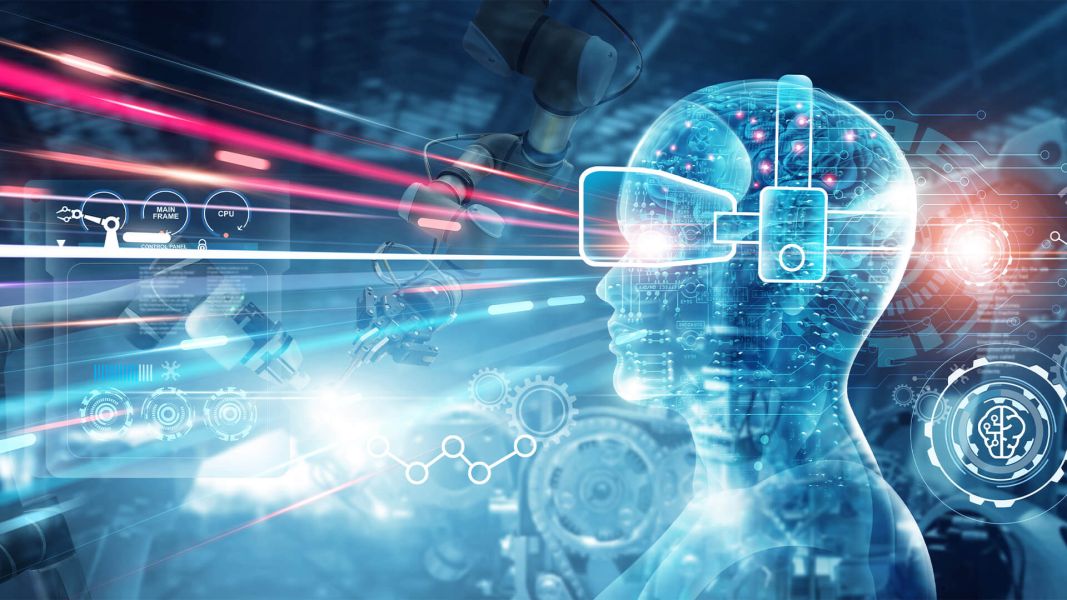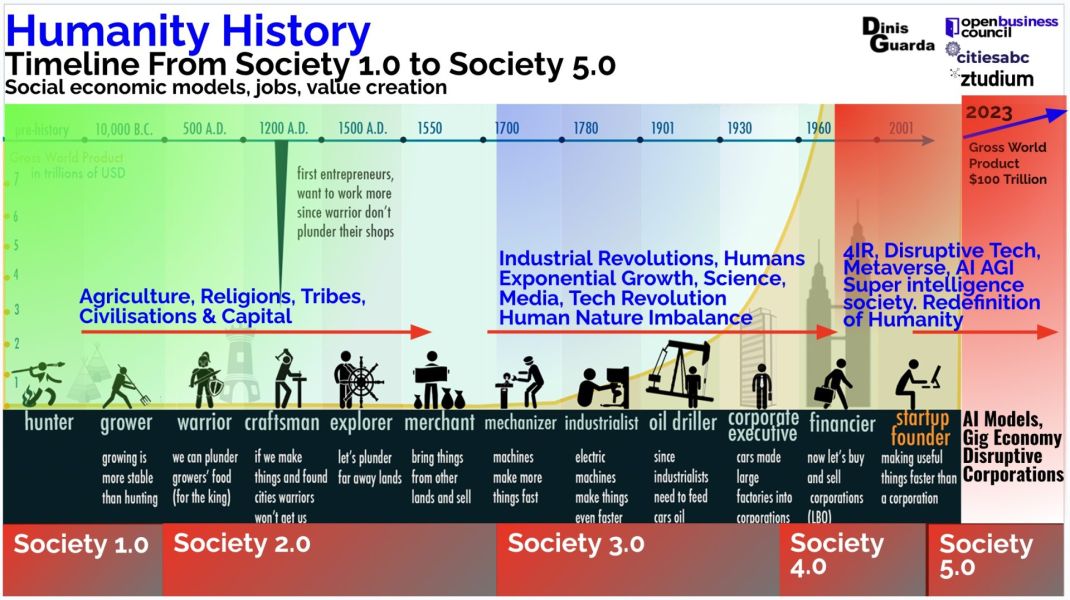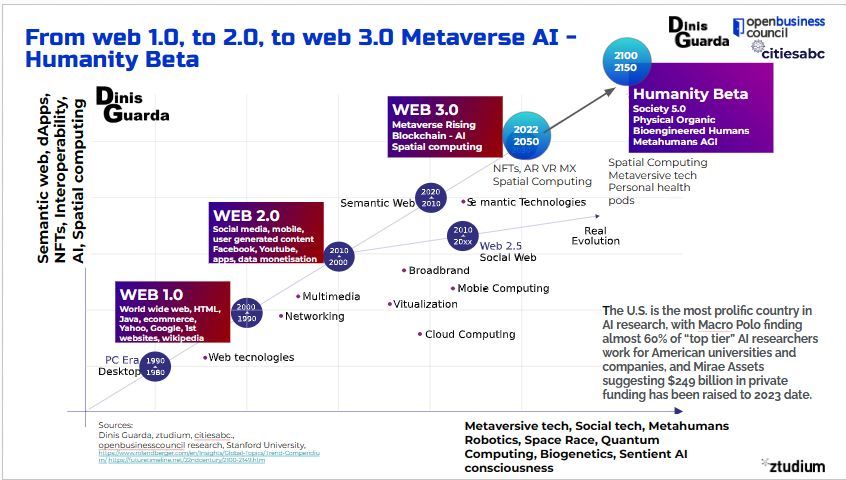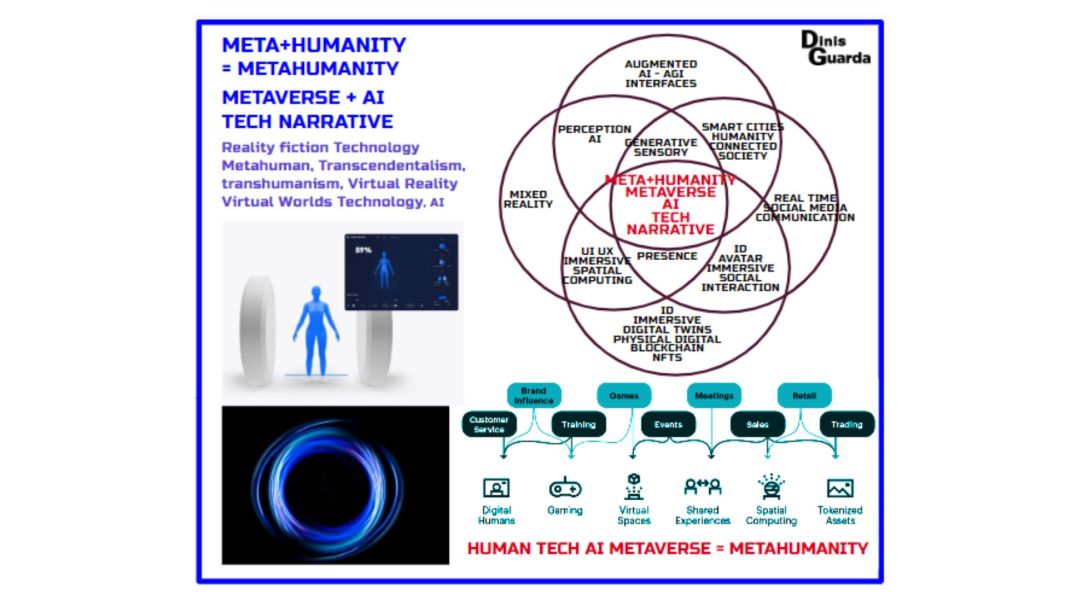The Metahumanity concept looks at multiple dimensions in which humans can (or not) reinvent themselves with the acceleration of technology. It further explores how, with AI and Spatial Computing evolving at the speed of light, Metaverse will leapfrog what humanity means.

In the 1920s, Karel Capek envisioned the co-existence of machines and humanity. Through his works, including R.U.R The War of the Newts and The Insect Play, he showcased (during the second industrial revolution) a glimpse of the exponential phase of the Fourth Industrial Revolution (4IR) we live in today.
However, the challenge with this growing velocity of innovations and exponential scaling of machines and digital systems is to understand how humanity can cope and manage its own brainchild.
Metahumanity is an unexplored realm that is constantly evolving unconsciously beyond human imagination. How can we shape this landscape of intersection?
But first, why not reverse engineer the concept of metahumanity to its core:
Metahumanity and the story of human evolution
Humanity has always looked at ways to transcend itself since its inception. Research shows that humans, through years of imagining senses, ideating, creating new worlds, and similar efforts, have somehow expanded their vision and created new capacities and realities. Religious personalities, poets, writers, Sci-Fi authors have been working on this set of concepts and ideas since the dawn of humanity.
The major word of our times: the powerful concept “technology” comes from two Greek words, transliterated “techne” and “logos”. “Techne” is a Greek word that means art, skill, craft, or the way, manner, or means by which a thing is gained. “Logos” means word, the utterance by which inward thought is expressed, a saying, or an expression.
The story of the evolution of humanity into metahumanity is a tale of relentless curiosity, innovation, and transformation. From mitigating the existential crises to the advent of the metaverse, human ingenuity has now resulted in rapid advancements in science, technology, and philosophy. This aspect of human nature has been consistently pushing the existing boundaries of knowledge and understanding, transcending into limitless space.

Metahumanity is a concept that describes how humanity is developing itself, as it adapts to the challenges and possibilities that come with the reality of the Metaverse.
Metahumanity is the next iteration of humanity, and metaverse is the preparation of that iteration
The prefix meta, of the word metaverse, is a Greek word that means “beyond,” “after,” or “behind” and combined can also be added to “change, transformation, substitution. The English word transports one thing into another, linguistically; the Greek transports things physically.
Verse, on the other hand, means “to turn” resulting from the latin word “versus” a line of writing. Verse is the same term used in “Universe”. It is based on the Proto-Indo-European “ver”, meaning to turn or bend.
The concept of the Metaverse represents an advanced embodiment of human transhumanism. It is in this realm where the cutting-edge technologies create a sensory physical and mental system, augmenting multiple capacities in a post-reality universe. Coined first by Neal Stevenson in his novel “Snow Crash” in 1992, his idea of metaverse depicted a virtual reality universe where users connect through goggles and earphones, influencing their physical selves.
The contemporary iteration of the Metaverse features human augmented solutions, social, immersive VR platforms compatible with massive multiplayer online video games, open game worlds and AR, VR, MR collaborative spaces.
However, a modern literary reincarnation of the Metaverse is the OASIS, illustrated in the 2011 science fiction novel Ready Player One authored by Ernest Cline. OASIS is a massively multi user online VR game that evolved into the predominant online destination for work, education and entertainment. It is an open game world, a constellation of virtual planets. Users connect to OASIS with headsets, haptic gloves and suits.

Presenting the perfect modern version of the metaverse, OASIS is much more than a public library containing all the worlds’ books freely and openly accessible to citizens. It presents a techno-utopian vision of virtual online education. Hundreds of luxurious public-school campuses are arranged on the surface of a planet dedicated exclusively to K-12 education. Online school classes are superior in comparison to the grass-and-mortar schools as they resemble holodecks: Teachers take students for virtual field trips to ancient civilisations, foreign countries, elite museums, other planets and inside the human body. As a result, students pay attention, are engaged and interested.
This is just an example of the present trajectory of innovations in the metaverse.
Coming to the word “humanity”. It is derived from the Latin “humanitas” that stands for “human nature, kindness.” Humanity can also refer to the kind feelings humans often have for each other.
Simply speaking, humanity is a collective term for the physical being of the creatures that inhabit our beautiful Earth, and for the qualities that make us human, such as the ability to love and have compassion, be creative; that distinguishes us from any machine, robot, or alien, per say..
Humanity is also a vision. It is a narrative of faith and hope residing in the values that holistically integrate intelligence, respect, kindness and forward thinking for sustainable innovation and creative DNA.
The way humans dream, imagine and create virtual ideas, personalities, gods, angels and worlds is what we will look at and call Meta+Humanity = Metahumanity.
The AGI blueprint for metahumanity
Meta + humanity—Metahumanity is my concept and research with my upcoming book. It looks at how humans are, and the subsequent need to expand their ability and use their intelligence and imagination to effectively communicate with their evolutionary AI, machines, and immersive metaverse digital twins.
Humans are dual in nature. While humanity is about emotions like love, hate, conflict, peace and creativity, there exists a contrasting destructive side that fosters ambition, desire, frustration. The ultimate goal of the metahumanity concept, however, is to transform and manage the emotional intelligence and integrate data, or access to new artificial enabled intelligence and information instantaneously.
“An individual has not started living until he can rise above the narrow confines of his individualistic concerns to the broader concerns of all humanity.”—Martin Luther King, Jr.

Metahumanity as a concept needs to make us rethink how we can be and continue fostering as humans when the technologies we created are surpassing our very own intelligence and capacity to use language to foster innovation and creativity.
The ethical imperative of metahumanity
The concept of Metahumanity raises important questions about the very nature of what it means to be human. It redefines the boundaries of the important universal concepts in accordance with the ethical, social, and cultural implications of human enhancement.
In my views, Metahumanity is like the innovative game changer element that redefines and disrupts how our DNA transcribes, or how our brains signal and transmit. The accelerated pace of technological advancements is constantly blurring the line between the physical being of a human and its new evolutionary artificial machine augmented with digital intelligence.
“What is tolerance? It is the consequence of humanity. We are all formed of frailty and error; let us pardon reciprocally each other’s folly—that is the first law of nature.”—Voltaire

Dinis Guarda is an author, academic, influencer, serial entrepreneur, and leader in 4IR, AI, Fintech, digital transformation, and Blockchain. Dinis has created various companies such as Ztudium tech platform; founder of global digital platform directory openbusinesscouncil.org; digital transformation platform to empower, guide and index cities citiesabc.com and fashion technology platform fashionabc.org. He is also the publisher of intelligenthq.com, hedgethink.com and tradersdna.com. He has been working with the likes of UN / UNITAR, UNESCO, European Space Agency, Davos WEF, Philips, Saxo Bank, Mastercard, Barclays, and governments all over the world.
With over two decades of experience in international business, C-level positions, and digital transformation, Dinis has worked with new tech, cryptocurrencies, driven ICOs, regulation, compliance, and legal international processes, and has created a bank, and been involved in the inception of some of the top 100 digital currencies.
He creates and helps build ventures focused on global growth, 360 digital strategies, sustainable innovation, Blockchain, Fintech, AI and new emerging business models such as ICOs / tokenomics.
Dinis is the founder/CEO of ztudium that manages blocksdna / lifesdna. These products and platforms offer multiple AI P2P, fintech, blockchain, search engine and PaaS solutions in consumer wellness healthcare and life style with a global team of experts and universities.
He is the founder of coinsdna a new swiss regulated, Swiss based, institutional grade token and cryptocurrencies blockchain exchange. He is founder of DragonBloc a blockchain, AI, Fintech fund and co-founder of Freedomee project.
Dinis is the author of various books. He has published different books such “4IR AI Blockchain Fintech IoT Reinventing a Nation”, “How Businesses and Governments can Prosper with Fintech, Blockchain and AI?”, also the bigger case study and book (400 pages) “Blockchain, AI and Crypto Economics – The Next Tsunami?” last the “Tokenomics and ICOs – How to be good at the new digital world of finance / Crypto” was launched in 2018.
Some of the companies Dinis created or has been involved have reached over 1 USD billions in valuation. Dinis has advised and was responsible for some top financial organisations, 100 cryptocurrencies worldwide and Fortune 500 companies.
Dinis is involved as a strategist, board member and advisor with the payments, lifestyle, blockchain reward community app Glance technologies, for whom he built the blockchain messaging / payment / loyalty software Blockimpact, the seminal Hyperloop Transportations project, Kora, and blockchain cybersecurity Privus.
He is listed in various global fintech, blockchain, AI, social media industry top lists as an influencer in position top 10/20 within 100 rankings: such as Top People In Blockchain | Cointelegraph https://top.cointelegraph.com/ and https://cryptoweekly.co/100/ .
Between 2014 and 2015 he was involved in creating a fabbanking.com a digital bank between Asia and Africa as Chief Commercial Officer and Marketing Officer responsible for all legal, tech and business development. Between 2009 and 2010 he was the founder of one of the world first fintech, social trading platforms tradingfloor.com for Saxo Bank.
He is a shareholder of the fintech social money transfer app Moneymailme and math edutech gamification children’s app Gozoa.
He has been a lecturer at Copenhagen Business School, Groupe INSEEC/Monaco University and other leading world universities.




























